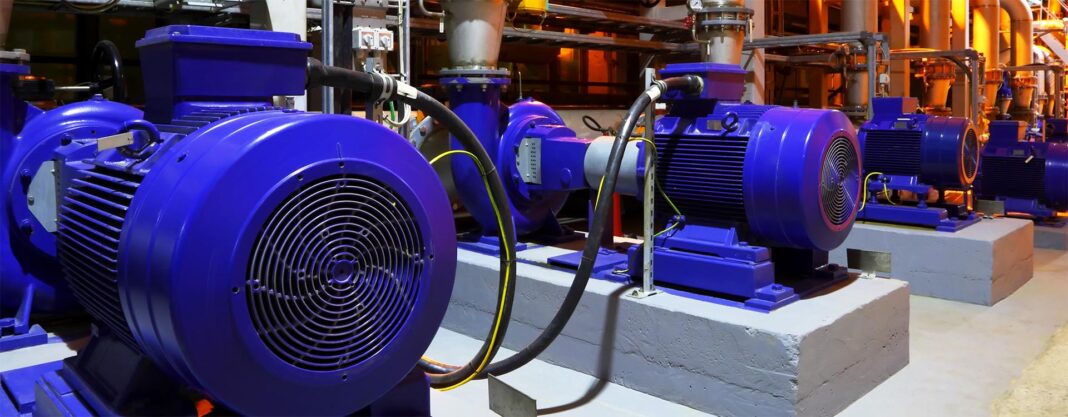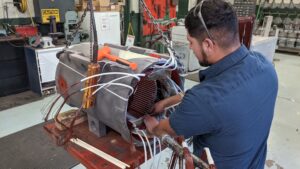How to Integrate A New Motor to Your System
When you purchase a new motor, you are making a large investment in your business. In order to protect this large investment you need to make sure that first, it runs as promised straight from the manufacturer; and second, it will continue to run as promised. Creating a data sheet, performing baseline and periodic maintenance, and doing routine inspections are all crucial to making sure your motor performs well over its entire lifetime.
Maintenance Data Sheet
Creating a data sheet to record baseline measurements is key to be able to notice small changes in your motor that could lead to motor failure later on. A separate data sheet should be made for each individual motor. Your data sheet should include:
- Information from the motor nameplate, as well as a picture of the nameplate in case information is recorded incorrectly.
- Records of electrical, mechanical and vibration tests as well as certain measurements performed before the motor is placed into service.
- i.e. load current, speed, and terminal voltage parameters, etc. (See specific tests below)
- Records of the physical inspection.
Testing & Measurements
When a new motor reaches your place of business, before installation, you should perform a few tests/measurements to create a baseline for each motor. This information should be recorded on the data sheet we discussed above. The tests/measurements that should be performed are:
- Insulation Resistance Testing
- Winding Resistance Testing
- Dielectric Absorption Ratio Test
- Accessories Testing (i.e. space heaters)
- HighPot Testing
- Output Shaft Extension Runouts
- Surge Testing
- Output Shaft Extension Diameters
- Single-phase Rotor Tests
- Alignment Data
- No-load Tests
- Vibration Analysis
- MCSA Testing
Inspection
After running all the required tests, nothing can perform an inspection quite like the tools we are all born with as human beings. Look at the motor to see if you can find anything that stands out to you or that “looks off.” Listen to the motor as it runs to see if you can hear any changes in the tone or pitch of your motor. Smell the air to see if you can find any strange odors coming from your motor. Touch the motor to feel if it is running hot. This won’t tell you for sure if your motor is running hot, but will give you a good baseline to work off of later. The best way to measure temperature is to use the proper tools to measure the temp at the winding embedded in the slot of your motor, install the proper sensors, or install a thermostat.
Interpreting Changes
Once the baselines for each motor have been established, you are able to reference back to these numbers each time you test your motor. This allows you to see any small changes in readings and identify small issues before they become catastrophic failures. This way of thinking about your machinery is referred to as ‘Predictive Maintenance’.
This article is based on our EMC Webinar: Getting the Most out of Your Electric Motor
Got More Motor Questions? We Can Help!
Call 800-595-5315 Or Connect With Our Expert Technicians Here:
Other Articles
- Critical Spare Planning
- The Three Most Common Externally Caused Motor Failures
- Remedies For Common Motor Winding Failures










